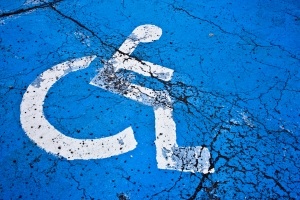 The goal for disability inclusion into mainstream society has made major strides forward. But make no mistake, it has been a long and difficult road toward equality and inclusion for people with disabilities. A reluctant public was unaccustomed to seeing people with profound disabilities in their midst. Remember, for centuries people with serious disabilities were shut away, institutionalize or worse. Even during the 1950s and 1960s, when I was a boy, one rarely saw the severely disabled in public.
The goal for disability inclusion into mainstream society has made major strides forward. But make no mistake, it has been a long and difficult road toward equality and inclusion for people with disabilities. A reluctant public was unaccustomed to seeing people with profound disabilities in their midst. Remember, for centuries people with serious disabilities were shut away, institutionalize or worse. Even during the 1950s and 1960s, when I was a boy, one rarely saw the severely disabled in public.
It was through relentless lobbying by disability advocates that things began to slowly change. Even when Canada’s Charter of Rights and Freedoms was being drafted in 1980 and ’81, then Justice Minister Jean Chretien resisted including Canadians with mental or physical disabilities in the Charter’s equality provisions (Section 15.1). It was only after a barrage of letters and phone calls from Canadians with disabilities, their advocates. families and other allies did the justice minister finally relent and include Canada’s disabled in the Charter. Section 15.1 in its final accepted form read:
” Every individual is equal before and under the law and has the right to the equal protection and equal benefit of the law without discrimination and, in particular, without discrimination based on race, national or ethnic origin, colour, religion, sex, age or mental or physical disability.”
It was celebrated as a great victory for Canadians with disabilities, and it was! Some significant advances toward inclusion have been accomplished over the past 30 years due to the Charter’s influence, certainly when compared to the past.
But those early advocates of disability rights and inclusion, 30 years ago, could not have imagined that assisted suicide would one day be touted as a right for the terminally and chronically ill and the severely disabled. How could they? The idea was beyond the pale of civilized thought. They had no idea how perverse things would become or that the same Charter that gave equality rights to Canada’s disabled citizens would eventually be twisted to perversely advocate assisting their suicides.
In America, a major victory was won with the Americans with Disabilities Act. But as various states across America cave to the idea of assisted suicide for the disabled and incurably ill (while at the same time promoting suicide prevention programs for the healthy and able-bodied population) the destructive contradiction to the concept equality, the corruption of law and threats to vulnerable human life will continue and worsen.
Be clear: All the wonderful advances to include and protect the rights of people with disabilities are threatened by assisted suicide (and euthanasia).
The first and highest human right is the right to life. All other rights become arbitrary and uncertain if the right to life is not guaranteed and protected — for everyone. If assisted suicide and euthanasia are accepted in North America, all the great strides for disability equality and inclusion will topple by the exclusion of the tomb. Mark my words.



